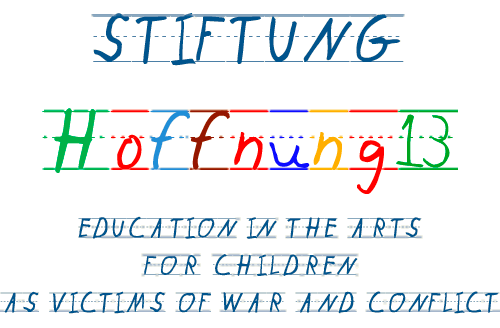2023-2025
Partner organisation: terre des hommes Germany
Taller Sur Art School: Popular arts as an instrument for the pursuit of equality, well-being, social justice and peace.
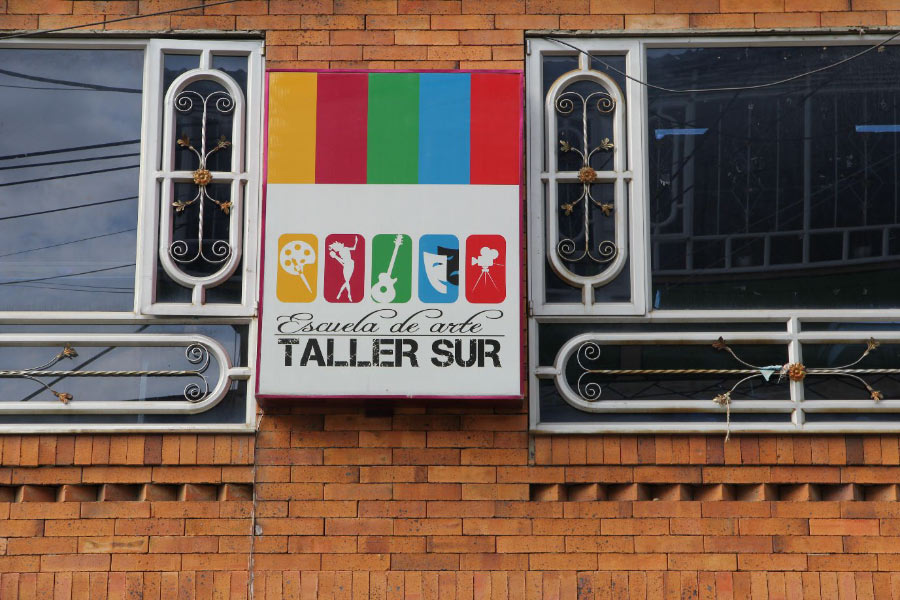
Background
Colombia has been at war between armed groups and the state military for more than 50 years. Although an official peace treaty was agreed with one of the largest parties to the conflict, the FARC, seven years ago, little has changed since then. The last few years have been characterised by a lack of conditions for the implementation of the peace agreements. This is also the case in the project region of Usme, Bogotá, which continues to be confronted with armed conflicts, human rights violations, violence, forced displacement, threats, forced recruitment of minors and homicides.
The armed conflict in Usme is having a devastating impact on the children and young people living in the area: For example, forced recruitment by illegal armed groups often leads to trauma, as children have to experience violence and to witness traumatic situations. Forced evictions also have a negative impact on children’s lives. They often lead to interruptions in education, separation from friends and family and the loss of a familiar and safe environment. Poverty is also exacerbated by the conflict and with it the lack of access to adequate food and medical care.
Therefore, protecting children’s rights and implementing measures for their recovery and well-being is fundamental to addressing these impacts.
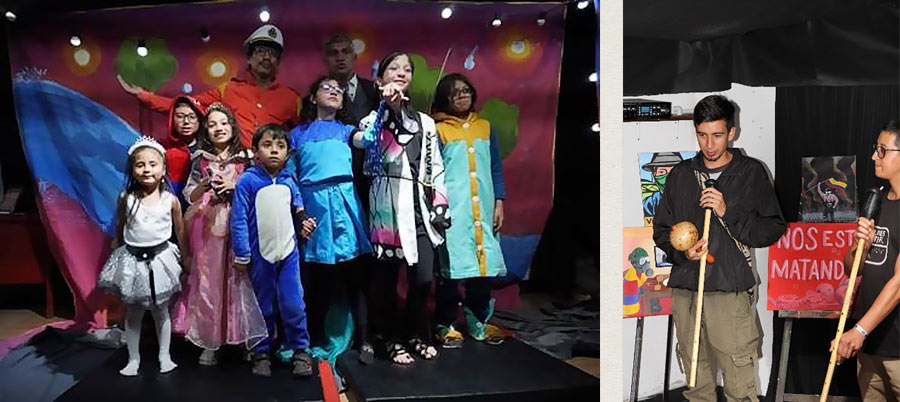
Objectives
Through artistic, cultural and political education, attending the Taller Sur Art School helps children and young people to take part in social change in Colombia in a participatory and peace-building way.
The partner organisation
The Taller Sur Art School (Escuela de Arte Taller Sur) was founded in 2013 as an initiative of teachers, students and social leaders in the Colombian region of Usme. Three key questions took centre stage:
- What role do art and artists play in society?
- Is it possible to make a living from art in Colombia or not?
- Can art be an element for social change?
Since its foundation, students at the art school have been exploring ways of living together peacefully in a society shaken by conflict.
The Taller Sur art school is located in Usme, Bogota (an area that is 30% urban and 70% rural). The team currently consists of 27 workshop leaders, including teachers, university students and artists.
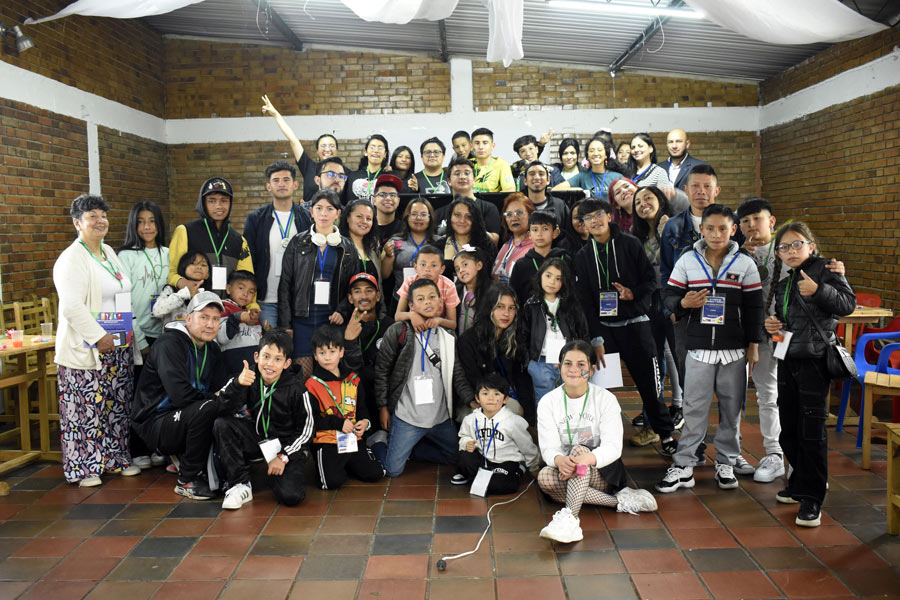
The project’s most important activities
- artistic training workshops for 300 children and young people in theatre, singing, guitar, musical grammar, bagpipes, drums and tambourine, weaving, plastic arts, drama, Zumba, English, philosophy for children, human rights, drawing, a.o.
- Organisation of the VI and VII UN Social Forums: A carnival for life, participation and peace.
- Organisation and realisation of the popular music festival „Acorde Pacifico“
- „Bazaar and Pazar“: Bazaar for territory and peace
- an age-appropriate diploma course for 130 children and 50 young adults on the topics of human and children’s rights, peace and reconciliation
- Training for 20 educational professionals in the development of child- and youth-orientated curricula
2022-2023
Partner organisation: terre des hommes Germany
Help for child soldiers and victims of violent conflict at the Benposta Art Academy
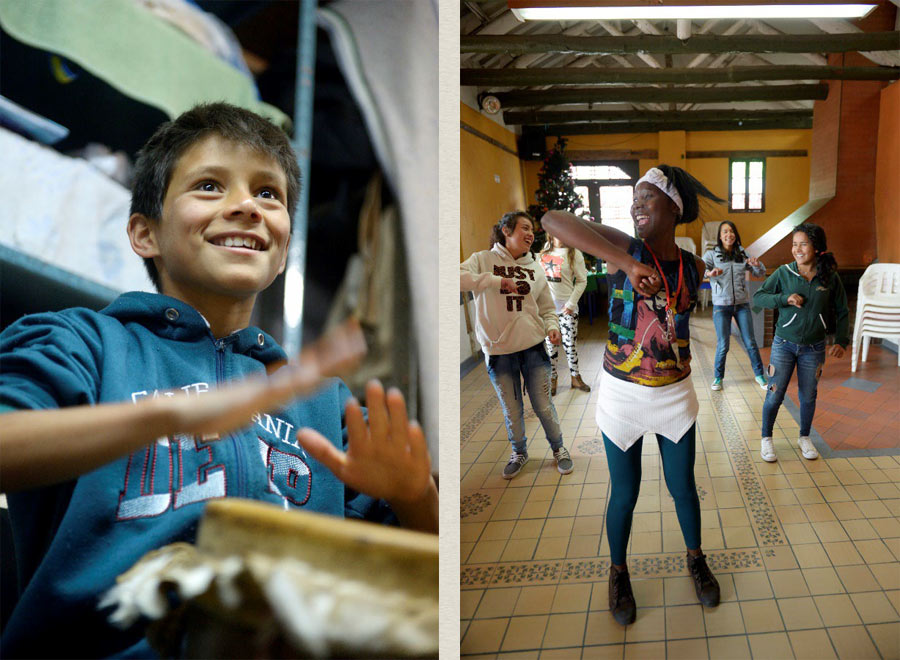
Background
Colombia has been at war between armed groups and the state military for more than 50 years. Although an official peace treaty was agreed with one of the largest parties to the conflict, the FARC, seven years ago, little has changed since then.
Human rights violations are still commonplace in Colombia and children in particular run the risk of being forcibly recruited by one of the parties to the conflict as fighters, helpers or even spies or messengers. Children and young people are expected to show unconditional obedience and absolute loyalty. Drugs are often used to numb the children’s and young people’s fears, dull their senses and lower their inhibitions towards violence.
Although the peace treaty provides for the demobilisation of child soldiers, the number of child soldiers in the country has been steadily increasing again since 2017. Armed groups that pose a threat to children and young people are still active in several regions of Colombia.
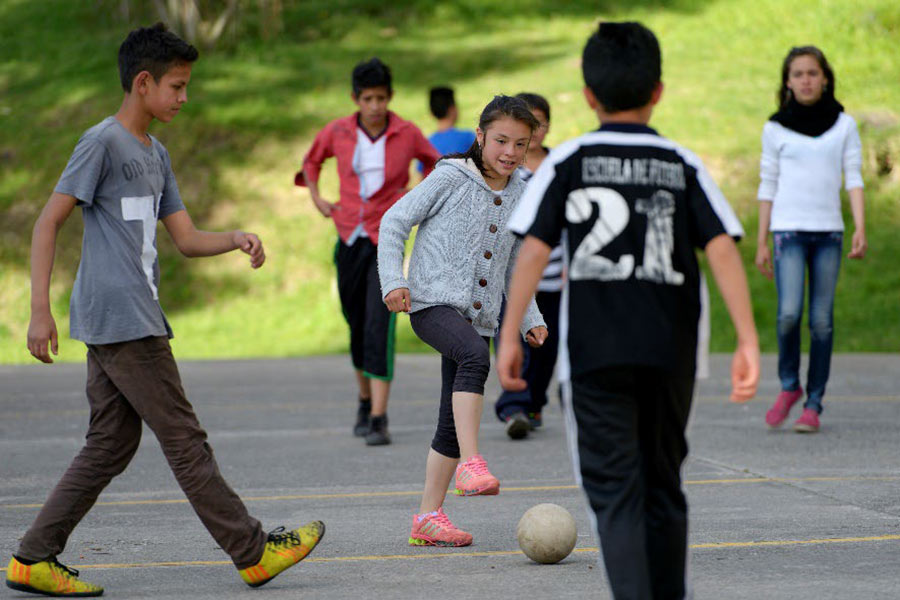
Objective
Children and young people affected by the armed conflict in Colombia have access to protection centres and take part in emotional stabilisation processes. This is being done as part of the ‘Cultura para la Vida’ strategy, which is being applied through art-based education at the art academy of our partner organisation Benposta.
In this project phase, 120 former child soldiers and victims of armed conflict are given the chance to start a new life. At the art academy, the children and young people aged between 8 and 23 receive protection and come to terms with the traumatic experiences they have suffered as a result of armed conflict.
This is achieved through artistic, sporting and vocational courses (including martial arts, painting, dance, singing and tailoring).
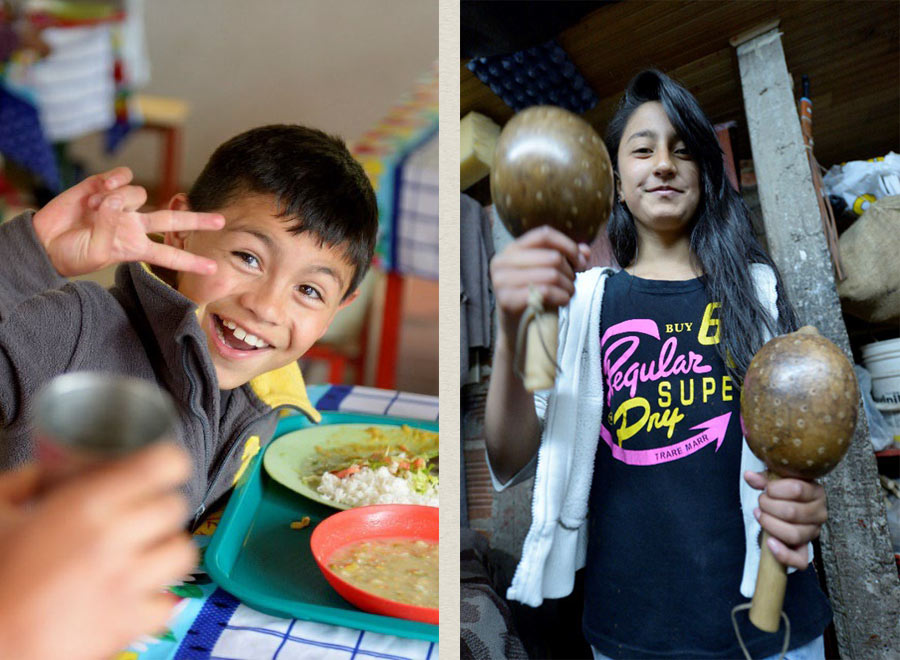
The most important activities and successes of the project:
- 120 children and young people were able to take part in artistic workshops at the Benposta Art Academy during the two years of the project. They attended courses in singing, percussion, dance, karate, football, handicrafts, sewing, weaving, communication, physical expression and theatre. The continuity of the programme and the space for the individual needs of the children and young people, particularly with regard to traumatic experiences, were emphasised.
- Due to a lack of interest, the initially planned course on creative handicrafts was replaced by a new course on exploring physical expression and theatre. This was well received by the children and young people and was very popular.
- Also in 2023, a mural painting workshop on the topic of non-violent communication was held, resulting in a mural on an exterior wall of the Benposta auditorium.
- A central workshop in these two project years was the collective creation of a joint artistic work: „Sueños al Viento“ (Dreams in the Wind)
- The production „Sueños al Viento“ dealt with central themes in the Colombian context: the country’s ethnic and cultural wealth, the violence prevalent in the country and its consequences, overcoming traumatising experiences through rituals, the collective recovery of the meaning of life and the shared celebration of joie de vivre.
- After this project was initiated in July and August 2022 and a guiding person was found in the form of the writer Fernando González, the thematic development and the creative development of a stage design with the participating children and young people followed. The necessary materials were purchased for this purpose and the sewing workshop was also involved in the production of the backdrops. The theatre was also equipped with a projection curtain, which enabled the children and young people from the photo and video workshop to take part in the project.
- The children and young people from each Benposta workshop contributed to the development of the play through the creative design of the costumes, the musical development, the realisation of the set design, the development of the choreography as well as the theatrical intention and the implementation of further props.
- At the rehearsals in October 2023, the various forms of artistic expression were brought together. At the dress rehearsals in November 2023, stage design, lighting, costumes, music, dance, theatre, karate, props and audiovisual suggestions were added. In this way, the children and young people created the joint work piece by piece and finally put it on stage.
- The premiere of the play took place as part of the celebrations on23 November 2023. November 2023, the anniversary of the signing of the peace agreement with the FARC. On 26 November, the play was performed again in the presence of parents, teachers and the entire community at the graduation ceremony at the Benposta Art Academy.
Conclusion
The artistic training had a positive effect on the personal development of the children and young people. The knowledge of their physical and individual abilities promoted their individual development and helped them to come to terms with the suffering they had experienced.
It is important to emphasise that the artistic experience at the Benposta Art Academy has two important dimensions of human development: On the one hand, the personal dimension, which contributes to restoring the self-esteem of children and young people. On the other hand, the collective dimension, in that the children and young people discover through concrete practices that their individual performance actively shapes the group structure at the Benposta Academy and that they can exert a direct influence.
